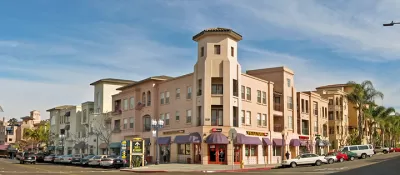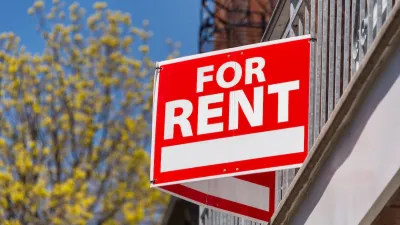San Diego is one of the most expensive housing markets in the country and has the fourth highest homeless population. Planning activist Murtaza Baxamusa identifies four needed measures.

One of the strongest tools to make housing more affordable in California is inclusionary housing policies and ordinances. Inclusionary housing laws require developments, as a condition of permitting, to contain a certain quantity of affordable units. HUD, state, and local regulations define "affordable." Explains planning activist Murtaza Baxamusa:
Since inclusionary zoning programs do not require direct subsidy dollars to create affordable homes and rentals, they are a market-based solution for affordable housing, according to Fannie Mae [pdf]. Inclusionary zoning ordinances are most effective in strong markets with optimum development incentives, and they are able to produce affordable housing that would not otherwise be built, according to the Urban Land Institute. Over 170 thousand affordable apartments and homes have been created through inclusionary programs nationally, according to an estimate by the Lincoln Institute of Land Policy [pdf].
Inclusionary housing ordinances, and particularly the principle behind them, have been upheld by the California Supreme Court. Additionally, a recent state law makes rental housing subject to inclusionary housing ordinances. However, some cities, like San Diego, have under-performing inclusionary housing ordinances. Baxamusa identifies four fixes to make inclusionary housing ordinances work. Please see the source article for more details.
FULL STORY: How to make housing more affordable in San Diego

Maui's Vacation Rental Debate Turns Ugly
Verbal attacks, misinformation campaigns and fistfights plague a high-stakes debate to convert thousands of vacation rentals into long-term housing.

Planetizen Federal Action Tracker
A weekly monitor of how Trump’s orders and actions are impacting planners and planning in America.

San Francisco Suspends Traffic Calming Amidst Record Deaths
Citing “a challenging fiscal landscape,” the city will cease the program on the heels of 42 traffic deaths, including 24 pedestrians.

Defunct Pittsburgh Power Plant to Become Residential Tower
A decommissioned steam heat plant will be redeveloped into almost 100 affordable housing units.

Trump Prompts Restructuring of Transportation Research Board in “Unprecedented Overreach”
The TRB has eliminated more than half of its committees including those focused on climate, equity, and cities.

Amtrak Rolls Out New Orleans to Alabama “Mardi Gras” Train
The new service will operate morning and evening departures between Mobile and New Orleans.
Urban Design for Planners 1: Software Tools
This six-course series explores essential urban design concepts using open source software and equips planners with the tools they need to participate fully in the urban design process.
Planning for Universal Design
Learn the tools for implementing Universal Design in planning regulations.
Heyer Gruel & Associates PA
JM Goldson LLC
Custer County Colorado
City of Camden Redevelopment Agency
City of Astoria
Transportation Research & Education Center (TREC) at Portland State University
Jefferson Parish Government
Camden Redevelopment Agency
City of Claremont




























